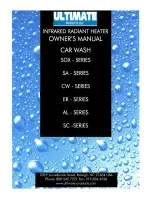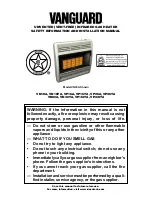
6
Commissioning
NOTICE!
Commissioning should only be performed by
specially trained personnel and documented
after the certificate has been issued.
1.
Check all connections, even those which
were sealed ex works (flange) for leak-tight-
ness.
2.
Then check all pipes for any leaks and, if
necessary, eliminate these.
3.
Test the safety assembly and valves for func-
tion.
4.
During the heating process, all expansion
water generated in the storage tank must be
captured by an appropriate expansion
vessel.
Flange installation port
Depending on the design of your system, fin-tube
heat exchangers may be attached to the boiler
flanges.
n
First tighten the nuts by hand.
n
Then tighten the nuts, in the sequence speci-
fied below, to a torque of 20 Nm to max. 25
Nm.
1
3
2
4
Fig. 5: Fitting the flange installation port
1: Flange ring
2: Seal
3: Supporting disc
4: Flange plate
7
Care and maintenance
Care
n
Clean the units with a damp cloth. (by adding,
for instance, a liquid household cleaner). Do
not use any caustic, abrasive or solvent-based
cleaning products.
Maintenance
n
It is recommended that you take out a mainte-
nance contract with an annual service from an
appropriate specialist firm.
This enables you to ensure the operational reli-
ability of the plant at all times!
n
Regularly check the function of the safety
valve.
The expansion water amount at maximum heat
(approx. 80°C) represents approx. 3.5% of the
storage tank capacity. When the safety valve test
knob is lifted or in the “Test” position, the water
must flow unhindered out of the safety valve body
into the drainage funnel.
CAUTION!
This can cause the cold water supply and parts
of the storage tank connection fitting to become
hot!
If the storage tank is not heated, no water should
drip from the safety valve. If this does occur, either
the system pressure is greater than the permitted
value or the safety valve is defective. In both
cases, the system must be tested by qualified per-
sonnel.
REMKO storage tank systems
12
Содержание KPS 130
Страница 15: ......


































